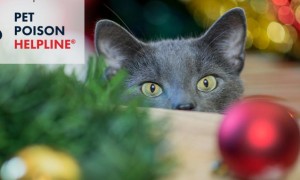Understanding Runny Nose in Cats: Causes, Symptoms, and Treatments
As cat owners, we often find ourselves attentive to our feline friends’ well-being. One common health issue that can arise is a runny nose, or nasal discharge, which can be a source of concern for many pet parents. While an occasional runny nose may not be alarming, it is essential to understand its potential causes, symptoms, and treatment options. This article will delve into the topic of runny noses in cats, providing you with the necessary information to better care for your beloved pet.
What Is a Runny Nose in Cats?
A runny nose, scientifically known as nasal discharge, occurs when mucus accumulates within the nasal passages and drains out. This can happen for various reasons, from minor irritations to significant health issues. Nasal discharge can be clear, yellow, green, or even bloody, indicating different underlying conditions. Alongside discharge, other symptoms may present themselves, which can help narrow down the cause.
Common Causes of a Runny Nose in Cats
-
Upper Respiratory Infections (URI):
One of the most frequent causes of a runny nose in cats is an upper respiratory infection. These infections can be viral, bacterial, or even fungal. The most common culprits are feline herpesvirus and calicivirus. URIs often present with additional symptoms such as sneezing, coughing, fever, and loss of appetite. -
Allergies:
Just like humans, cats can suffer from allergies that trigger a runny nose. Common allergens include pollen, dust mites, mold, and certain foods. If your cat’s nose runs particularly during certain seasons or after exposure to specific substances, allergies may be the culprit. -
Dental Problems:
Surprisingly, dental issues can lead to nasal discharge. Tooth infections, particularly in the upper jaw, can spread to the nasal passages, causing inflammation and mucus production. If your cat has mouth pain or bad breath, a dental check-up is essential. -
Nasal Polyps or Tumors:
While less common, the presence of nasal polyps or tumors can obstruct the nasal passages, leading to a runny nose. These growths may also cause difficulty breathing and persistent nasal discharge. Early veterinary intervention is critical in these cases. -
Foreign Bodies:
Cats are naturally curious creatures, and they sometimes get foreign objects lodged in their nasal passages. Grass, seeds, or small bits of toys can irritate the mucosal lining and lead to a runny nose. This condition may also be accompanied by pawing at the nose or sneezing. -
Environmental Irritants:
Exposure to smoke, strong odors, or chemicals can irritate your cat’s nasal passages, leading to a runny nose. If you have recently changed cleaning products or brought new items into your home, monitor your cat for any signs of distress.
Recognizing Symptoms
Along with a runny nose, other symptoms may accompany the condition, providing further clues about its cause. Look out for:
- Sneezing and coughing
- Watery eyes
- Decreased appetite
- Lethargy
- Difficulty breathing or wheezing
- Bad breath
- Excessive grooming of the facial area
If your cat displays any of these accompanying symptoms, it may indicate a more serious underlying issue that requires veterinary attention.
When to See a Veterinarian
While a runny nose can sometimes resolve on its own, there are instances when you should consult a veterinarian:
- If the nasal discharge persists for more than a few days
- If the discharge is green, yellow, or bloody
- If your cat shows signs of severe lethargy or appetite loss
- If your cat has difficulty breathing, is coughing persistently, or is wheezing
- If you notice fever or other unusual behaviors
Your veterinarian may perform a physical examination, run tests, and possibly take X-rays to determine the underlying cause of the nasal discharge and recommend appropriate treatment.
Treatment Options
Treatment for a runny nose in cats will depend on the underlying cause:
-
Antibiotics: If a bacterial infection is diagnosed or suspected, your veterinarian may prescribe antibiotics to combat the infection.
-
Antihistamines: For allergy-related nasal discharge, antihistamines might be beneficial in reducing symptoms.
-
Dental Treatments: If dental issues are the cause, appropriate dental care or surgery may be necessary.
-
Supportive Care: In cases of viral infections, treatment may focus on symptom relief, hydration, and nutrition.
-
Surgical Intervention: For nasal polyps or tumors, surgical removal may be necessary.
Conclusion
A runny nose in cats can be a common issue, but it should not be overlooked. By understanding the potential causes and recognizing the symptoms, pet owners can take proactive steps toward safeguarding their pets’ health. Always remember that if you are concerned about your cat’s symptoms, consulting with a veterinarian is the best course of action. Regular veterinary check-ups, vaccinations, and preventive care can help ensure your cat remains healthy and happy for years to come.






